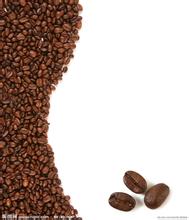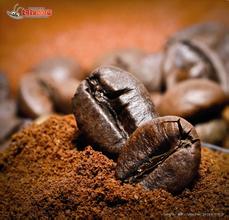Colombia Hope Manor Coffee Variety producing area Flavor Flavor Coffee Bean introduction
pre-Columbian era
Around 10000 BC, hunter-gatherer societies existed near present-day Bogotá. Around the first millennium AD, the Indians of America created a political system. It is a pyramid structure, the top for the leader. In present-day Colombia, two civilizations adopted this complex system. One is Tayronas in the Caribbean region and the other is Muisca near Bogotá. Musika can also be translated as Chibcha.
The indigenous population of pre-independence Colombia Colombia was the Chibucha Indians. They use wooden and stone tools to grow crops such as corn and cassava and weave cotton cloth. The area is a famous gold mine in ancient South America, and the Chibcha people have a high level of gold decorative art.
colonial era
The Spanish R. de Bastidas first reached the northern coast of Colombia in 1501 and founded the city of Santa Marta in 1525. In 1533, P. de Heredia founded Cartagena. In 1535, G. Jimenez de Quesada led Spanish colonial troops into the interior of Colombia, conquered the Chibcha people, established the city of Bogotá, and from then on Colombia became a Spanish colony. early
European colonists arrive in Colombia
European colonists arrive in Colombia
It is under the jurisdiction of the Governor of Peru, who ruled directly after the Spanish royal family set up the Governor of New Granada in Bogotá in 1718. Under Spanish colonial rule, Indians were cruelly exploited, and native whites suffered all kinds of oppression. Indians revolted repeatedly, and native-born whites revolted in 1781 (see Civic Revolt of New Granada)
Colombia coffee is one of the few plain coffees sold worldwide under its name. In terms of quality, it has won praise that no other coffee can match.
Colombia coffee is divided into more than 200 grades, which means that coffee is very regional. The coffee-producing region of the country is located in the Andes, where the climate is mild and the air is humid. Colombia has three Cordillera mountains running north-south, right into the Andes. Coffee is grown along the highlands of these mountains. The terraces provide a diverse climate, with harvest seasons throughout the year and different types of coffee maturing at different times. And fortunately, unlike Brazil, Colombia doesn't have to worry about frost damage. There are approximately 700 million recorded coffee trees in Colombia, 66 per cent of which are grown on modern plantations and the rest on small traditionally managed farms.
The National Coffee Management Association of Colombia, like Kenya's National Management Association, is a model for coffee organizations. Colombia is more concerned with product development and production promotion than other producing countries. It is this, coupled with its superior geographical and climatic conditions, that makes Colombia coffee delicious and famous all over the world. The status of coffee in Colombia is illustrated by the fact that all vehicles entering the country must be sprayed to avoid inadvertent disease and damage to coffee trees.
Colombia is blessed with Atlantic and Pacific ports, which help to reduce the cost of transporting coffee. It is the only country in South America that has this condition. The main productive areas of Colombia are located in the Central and Eastern Mountains. The most important plantations distributed along the Central Mountains are located in Medellin, Armenia and Manizales. Of the three regions mentioned above, Medellín produces the best quality coffee and the highest price, characterized by full grains, rich nutrition, rich aroma and moderate acidity. These three areas are collectively known as MAM.
Colombia coffee is often described as having a silky smooth taste, and of all coffees, it has the best balance, a soft, smooth taste, and ready to drink

Important Notice :
前街咖啡 FrontStreet Coffee has moved to new addredd:
FrontStreet Coffee Address: 315,Donghua East Road,GuangZhou
Tel:020 38364473
- Prev

Introduction to the characteristics of coffee flavor and taste varieties in Costa Rica Goddess Manor
The seven provinces are: Alajuela Alajuela (central, northwest of San Jose), Catago Cartago (central, east of San Jose), Guanacaster Guanacaste (northwest), Eredia Heredia (central, north of San Jose), Limon Limn (east, along the Caribbean), Pentalenas Puntarenas (west, along the Pacific Ocean), San Jose San
- Next

Introduction of Flavor and Flavor Coffee in the Coffee Variety producing area of Tianji Manor in Nicaragua
Since July 1927, Augusto. Cesar. Sandino led the people in a guerrilla war against the US occupation, forcing the US military to withdraw in 1933. On February 21, 1934, the Commander of the Nicaraguan National Guard, Anastacio. Somocha. Garcia assassinated Sandino at the behest of US President Roosevelt. He became president in 1936 and has been pro-American for more than 40 years since then.
Related
- Does Rose Summer choose Blue, Green or Red? Detailed explanation of Rose Summer Coffee plots and Classification in Panamanian Jade Manor
- What is the difference between the origin, producing area, processing plant, cooperative and manor of coffee beans?
- How fine does the espresso powder fit? how to grind the espresso?
- Sca coffee roasting degree color card coffee roasting degree 8 roasting color values what do you mean?
- The practice of lattes: how to make lattes at home
- Introduction to Indonesian Fine Coffee beans-- Java Coffee producing area of Indonesian Arabica Coffee
- How much will the flavor of light and medium roasted rose summer be expressed? What baking level is rose summer suitable for?
- Introduction to the characteristics of washing, sun-drying or wet-planing coffee commonly used in Mantenin, Indonesia
- Price characteristics of Arabica Coffee Bean Starbucks introduction to Manning Coffee Bean Taste producing area Variety Manor
- What is the authentic Yega flavor? What are the flavor characteristics of the really excellent Yejasuffi coffee beans?

